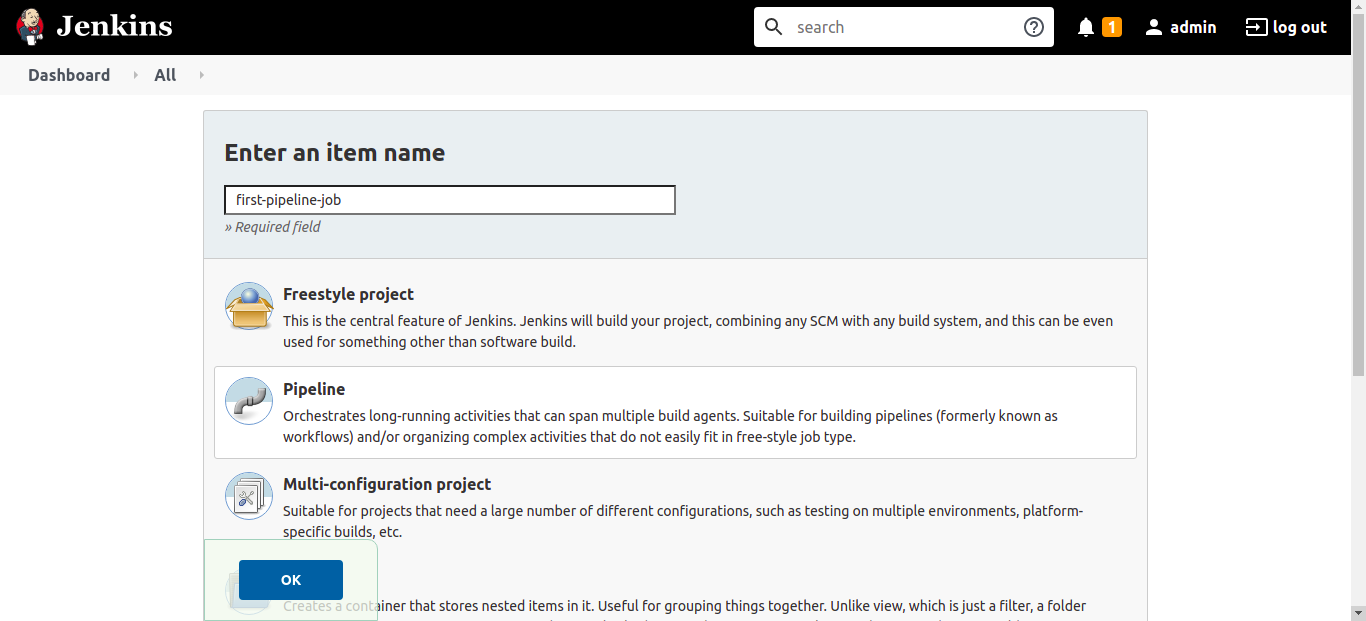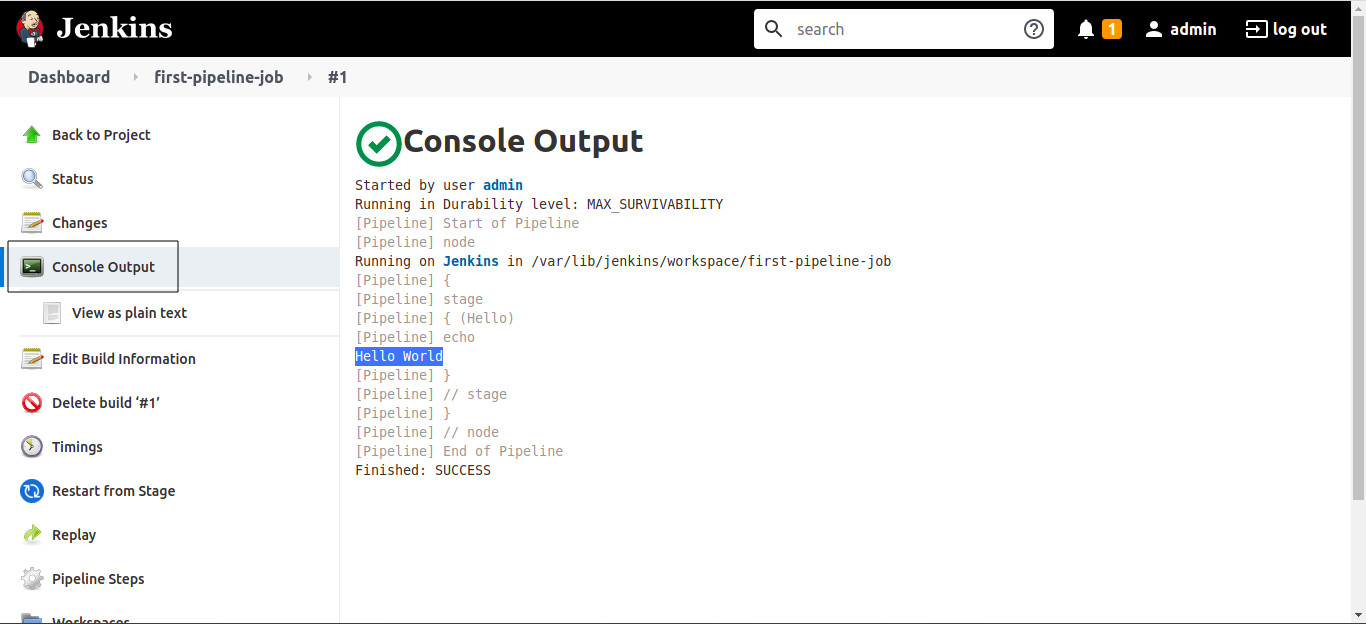Approach 1: Jenkins pipeline script(Declarative pipeline) in Jenkins editor itself
This approach is good when we want to test some feature quickly. Now we will create a Job to print “Hello World” This approach is not recommended for realtime project.
From Jenkins dashboard, click on New Item

Enter the job name, select Pipeline and click on OK

Scroll down, go to Pipeline section, in Definition select Pipeline script, from try sample Pipeline… select Hello World sample pipeline script is added. click on Save
In this we have Hello stage, which will execute a echo command to print “Hello World”

Click on Build Now

Click on build no #1

Click on Console Output Now we can see the Hello World is printed on the screen

Approach 2: Jenkins pipeline script(Declarative pipeline) in Jenkinsfile
In this approach, the pipeline script is written to a file called Jenkinsfile then this file is added to the source code repository eg: Github, Gitlab
This approach is used in realtime project.
The Jenkinsfile can be named to anything like this Jenkinsfile-dev, 01-Jenkinsfile-helloworld
While running the pipeline, it will fetch the Jenkinsfile and execute all the stages defined in the Jenkinsfile.
I have a sample Jenkinsfile named 01-Jenkinsfile-helloworld in the cicd folder of the following github repo hello-world
pipeline {
agent any
stages {
stage ('Build') {
steps {
sh 'echo Hello Build stage'
}
}
stage ('Test') {
steps {
sh 'echo hello Test stage'
}
}
}
}In above Jenkinsfile I have created two stages Build and Test, in both the stages for now I am just executing the echo command in sh step
Now lets see how to create a pipeline job using Jenkinsfile from github repository.
From Jenkins dashboard, click on New Item

Enter the job name, select Pipeline and click on OK

Scroll down, go to Pipeline section, in Definition select Pipeline script from SCM, select Git from SCM. In Repository URL give the github url https://github.com/vigneshsweekaran/hello-world.git
This is a public repository so credentials are not required. If your reository is private then we need credentials to pull the code. Store the username and password in credentials. Then from the Credentials drop down select your git repository credential.
How to store credentials in Jenkins

Now enter the branch name master in Branches to build field, then enter the Jenkinsfile name cicd/01-Jenkinsfile-helloworld in Script path click on save

Click on Build Now then go to Console Output
From the Console Output first line, we can see first it fetches the cicd/01-Jenkinsfile-helloworld from Github, then clone the source code and executes the steps inside each stage.

Echo commands from stages are printed to console output
